From Wikipedia, the free encyclopedia
The Thar Desert (Rajasthani: थार मरुधर, Hindi:थार मरुस्थल,Urdu (Urdu: تھر صحرا also known as the Great Indian Desert) is a large, arid region in the northwestern part of the Indian subcontinent and forms a natural boundary running along the border between India and Pakistan. With an area of more than 200,000 km2 (77,000 sq mi),[1] it is the world's 9th largest subtropical desert.[2]
It lies mostly in the Indian State of Rajasthan, and extends into the northern portion of Haryana and Punjab states and into southern Gujarat state. In Pakistan, the desert covers eastern Sindh province and the southeastern portion of Pakistan's Punjab province. The Cholistan Desert adjoins the Thar desert spreading into Pakistani Punjab province.
Contents[hide] |
[edit]Location and description
In India the Thar Desert (also known as the Great Indian Desert) extends from the Sutlej River, surrounded by theAravalli Range on the east, on the south by the salt marsh known as the Great Rann of Kutch (parts of which are sometimes included in the Thar), and on the west by the Indus River. Its boundary to the large thorny steppe to the north is ill-defined, about 3/5thof the total geographical area of the State.
In Pakistan, the desert covers eastern Sindh and the southeastern portion of Punjab, Pakistan. TheTharparkar District is one of the major parts of the desert area. Tharparkar consists of two words: Thar means ‘desert’ while Parkar stands for ‘the other side’.
In Pakistan, the desert covers eastern Sindh and the southeastern portion of Punjab, Pakistan. TheTharparkar District is one of the major parts of the desert area. Tharparkar consists of two words: Thar means ‘desert’ while Parkar stands for ‘the other side’.
[edit]Physiography and geology
The Thar Desert slopes imperceptibly towards the Indus Plain and surface unevenness is mainly due to sand dunes. The dunes in the south are higher, rising sometimes to 152 m whereas in the north they are lower and rise to 16 m above the ground level.
The Aravalli forms the main landmark to the south-east of Thar Desert.
Desert soil - The soils of the Arid Zone are generally sandy to sandy-loam in texture. The consistency and depth vary according to the topographical features. The low-lying loams are heavier and may have a hard pan. Some of these soils contain a high percentage of soluble salts in the lower horizons, turning water in the wells poisonous.
Desert soil - The soils of the Arid Zone are generally sandy to sandy-loam in texture. The consistency and depth vary according to the topographical features. The low-lying loams are heavier and may have a hard pan. Some of these soils contain a high percentage of soluble salts in the lower horizons, turning water in the wells poisonous.
[edit]Origin
The origin of the Thar Desert is a controversial subject. Some consider it to be 4000 to 10,000 years old, whereas others state that aridity started in this region much earlier.
Another theory states that area turned to desert relatively recently: perhaps around 2000 - 1500 BC. Around this time the Ghaggar-Hakra ceased to be a major river. It now terminates in the desert but at one time was a water source for the Indus Valley Civilization centre of Mohenjo-daro.
It has been observed through remote sensing techniques that Late Quaternary climatic changes andneotectonics have played a significant role in modifying the drainage courses in this part and a large number of palaeochannels exist.
Another theory states that area turned to desert relatively recently: perhaps around 2000 - 1500 BC. Around this time the Ghaggar-Hakra ceased to be a major river. It now terminates in the desert but at one time was a water source for the Indus Valley Civilization centre of Mohenjo-daro.
It has been observed through remote sensing techniques that Late Quaternary climatic changes andneotectonics have played a significant role in modifying the drainage courses in this part and a large number of palaeochannels exist.
Most studies did not share the opinion that the palaeochannels of the Sarasvati River coincide with the bed of the present-day Ghaggar and believe that the Sutlej along with the Yamuna once flowed into the present riverbed. It has been postulated that the Sutlej was the main tributary of the Ghaggar and that subsequently the tectonic movements might have forced the Sutlej westwards, the Yamuna eastwards and thus dried up the Ghaggar-Hakra.
Studies on Kalibangan in the desert region by Robert Raikes[3] indicate that it was abandoned because the river dried up. Prof. B. B. Lal (retd. Director General of Archaeological Survey of India) supports this view by asserting: "Radiocarbon dating indicates that the Mature Harappan settlement at Kalibangan had to be abandoned around 2000-1900 BCE. And, as the hydrological evidence indicates, this abandonment took place on account of the drying up of the Ghaggar-Hakra. This latter part is duly established by the work of Raikes, an Italian hydrologist, and of his Indian collaborators".[4]
[edit]Thar in ancient literature
The Indian epics describe this region as Lavanasagara(Salt-ocean).
Ramayana mentions about Lavanasagara (Salt-ocean) when Rama goes to attack Lanka with the army of vanaras. Rama uses his agneyashtra-amogha to dry up the sea named drumakulya situated on north of Lavanasagara. A fresh water source named Pushkar surrounded byMarukantara was created.[5]
Ramayana mentions about Lavanasagara (Salt-ocean) when Rama goes to attack Lanka with the army of vanaras. Rama uses his agneyashtra-amogha to dry up the sea named drumakulya situated on north of Lavanasagara. A fresh water source named Pushkar surrounded byMarukantara was created.[5]
According to Jain cosmology, Jambūdvīpa is at the centre of Madhyaloka, or the middle part of the universe, where the humans reside. Jambūdvīpaprajñapti or the treatise on the island of Roseapple tree contains a description of Jambūdvīpa and life biographies of Ṛṣabha and King Bharata. Jambūdvīpa continent is surrounded by ocean Lavanoda (Salt-ocean).
The Sarasvati River is one of the chief Rigvedic riversmentioned in ancient Hindu texts. The Nadistuti hymn in the Rigveda (10.75) mentions the Sarasvati between the Yamuna in the east and the Sutlej in the west, and later Vedic texts like Tandya and Jaiminiya Brahmanas as well as the Mahabharata mention that the Sarasvati dried up in a desert.
Most scholars agree that at least some of the references to the Sarasvati in the Rigveda refer to the Ghaggar-Hakra River, while the Helmand River is often quoted as the locus of the early Rigvedic river. Whether such a transfer of the name has taken place, either from the Helmand to the Ghaggar-Hakra, or conversely from the Ghaggar-Hakra to the Helmand, is a matter of dispute.
There is also a small present-day Sarasvati River (Sarsuti) that joins the Ghaggar river.
Mahabharata mentions about Kamyaka Forest situated on the western boundary of the Kuru Kingdom(Kuru Proper + Kurujangala), on the banks of the Saraswati River. It lay to the west of the Kurukshetraplain. It contained within it a lake called the Kamyaka lake (2,51). Kamyaka forest is mentioned as being situated at the head of the Thar desert,[6] near the lake Trinavindu (3,256). The Pandavas on their way to exile in the woods, left Pramanakoti on the banks of the Ganges and went towardsKurukshetra, travelling in a western direction, crossing the rivers Yamuna and Drishadvati. They finally reached the banks of the Saraswati River. There they saw the forest of Kamyaka, the favourite haunt of ascetics, situated on a level and wild plain on the banks of the Saraswati (3-5,36) abounding in birds and deer (3,5). There the Pandavas lived in an ascetic asylum (3,10). It took 3 days for Pandavas to reach the Kamyaka forest, setting out from Hastinapura, on their chariots (3,11).
In Rigveda we also find mention of a River named Aśvanvatī along with river Drishadvati.[7] Some scholars consider both Saraswati and Aśvanvatī the same river.[6]
The human habitations on the banks of rivers Saraswati and Drishadvati had shifted to the east and south directions prior to Mahabharata period. During those days The present day Bikaner and Jodhpurareas were known as Kurujangala and Madrajangala provinces.[8]
The Desert National Park, Jaisalmer has a collection of fossils of animals and plants of 180 million years old. Some fossils of Dinosaurs of 6 million years old have also been found in the area.[5]
[edit]Biodiversity
Stretches of sand in the desert are interspersed by hillocks and sandy and gravel plains. Due to the diversified habitat and ecosystem, the vegetation, human culture and animal life in this arid region is very rich in contrast to the other deserts of the world. About 23 species of lizard and 25 species of snakes are found here and several of them are endemic to the region.
Some wildlife species, which are fast vanishing in other parts of India, are found in the desert in large numbers such as the Blackbuck (Antilope cervicapra), the Indian Gazelle(Gazella bennettii) and the Indian Wild Ass (Equus hemionus khur) in the Rann of Kutch. They have evolved excellent survival strategies, their size is smaller than other similar animals living in different conditions, and they are mainly nocturnal. There are certain other factors responsible for the survival of these animals in the desert. Due to the lack of water in this region, transformation of the grasslands into cropland has been very slow. The protection provided to them by a local community, the Bishnois, is also a factor. Other mammals of the Thar area include a subspecies of Red Fox (Vulpes vulpes pusilla) and a wild cat, thecaracal.
The region is a haven for 141 species of migratory and resident birds of the desert. One can see eagles, harriers,falcons, buzzards, kestrel and vultures. Short-toed Eagles(Circaetus gallicus), Tawny Eagles (Aquila rapax), Spotted Eagles (Aquila clanga), Laggar Falcons (Falco jugger) and kestrels. There are also a number of reptiles.
The Indian Peafowl is a resident breeder in the Indian subcontinent particularly Thar region. The peacock is designated as the national bird of India and the provincial bird of the Punjab (Pakistan). It can be seen sitting on Khejri or Pipal trees in villages or Deblina.
[edit]Natural vegetation
The natural vegetation of this dry area is classed as Northern Desert Thorn Forest[9] occurring in small clumps scattered more or less openly. Density and size of patches increase from west to east following the increase in rainfall. Natural vegetation of Thar Desert is composed of followingtree, shrub and herb species.[10]
[edit]Tree species
Acacia jacquemontii, Acacia leucophloea, Acacia senegal,Albizia lebbeck, Azadirachta indica, Anogeissus rotundifolia, Prosopis cineraria, Salvadora oleoides,Tecomella undulata, Tamarix articulata
[edit]Small trees and shrubs
Calligonum polygonoides, Acacia jacquemontii, Balanites roxburghii, Ziziphus zizyphus, Ziziphus nummularia,Calotropis procera, Suaeda fruticosa, Crotalaria burhia,Aerva tomentosa, Clerodendrum multiflorum, Leptadenia pyrotechnica, Lycium barbarum, Grewia populifolia,Commiphora mukul, Euphorbia neriifolia, Cordia rothii, Maytenus emarginata, Capparis decidua.Mimosa hamata
[edit]Herbs and grasses
Eleusine compressa, Dactyloctenium scindicum, Cenchrus biflorus, Cenchrus setigerus, Lasiurus hirsutus, Cynodon dactylon, Panicum turgidum, Panicum antidotale, Dichanthium annulatum,Sporobolus marginatus, Saccharum spontaneum, Cenchrus ciliaris, Desmostachya bipinnata,Erogrostis species, Ergamopagan species, Phragmitis species, Tribulus terrestris, Typha species,Sorghum halepense, Citrullus colocynthis
[edit]Threats and preservation
There are eleven national parks in the Thar desert area, the largest of which are the Nara Desert Wildlife Sanctuary and the Rann of Kutch.
Others include: the Desert National Park, Jaisalmer (3162 km²) is an excellent example of the ecosystem of the Thar Desert, and its diverse fauna. The endangered Great Indian Bustard (Chirotis nigricaps), Blackbuck, chinkara, fox, Bengal fox, wolf, and caracal can be seen here. Seashells and massive fossilized tree trunks in this park record the geological history of the desert; Tal Chhapar Sanctuary a very small sanctuary in Churu District, 210 km from Jaipur, in the Shekhawati region. This sanctuary is home to a large population of Blackbuck while fox and caracal can also be spotted along with typical avifauna such as partridge and sand grouse;Jalore Wildlife Sanctuary (130 km from Jodhpur) is another small sanctuary that is privately owned where a sizeable population of rare and endangered wildlife is present including the Asian-Steppe Wildcat([Ornata]), Leopard, Zird, Desert Fox and herds of Indian Gazelle.
[edit]Greening desert
The soil of the Thar Desert remains dry for much of the year and is prone to wind erosion. High velocity winds blow soil from the desert, depositing some on neighboring fertile lands, and causing shifting sand dunes within the desert, which bury fences and block roads and railway tracks. Permanent solution to this problem of shifting sand dunes can be provided by fixation of the shifting sand dunes with suitable plant species and planting windbreaks andshelterbelts. They also provide protection from hot or cold and desiccating winds and the invasion of sand.
There are few local tree species suitable for planting in the desert region and these are slow growing. The introduction of exotic tree species in the desert for plantation has become necessary. Many species of Eucalyptus, Acacia, Cassia and other genera from Israel, Australia, USA, Russia, Southern Rhodesia,Chile, Peru and Sudan have been tried in Thar Desert.Acacia tortilis has proved to be the most promising species for desert afforestation and the jojoba is another promising species of economic value found suitable for planting in these areas.
The Rajasthan Canal (Indira Gandhi Canal) system is the major irrigation scheme of the Thar Desert and is conceived to reclaim it and also to check spreading of the desert to fertile areas.
[edit]Desert economy
[edit]Agriculture
The Thar is one of most heavily-populated desert areas in the world and the main occupations of people living here areagriculture and animal husbandry. Agriculture is not a dependable proposition in this area—after the rainy season, at least 33% of crops fail. Animal husbandry, trees and grasses, intercropped with vegetables or fruit trees, is the most viable model for arid, drought-prone regions. The region faces frequent droughts. Overgrazing due to high animal populations, wind and water erosion, mining and other industries result in serious land degradation.
The agricultural production is mainly from the Kharif crops. The Kharif crops are the crops that are grown in the summer season and are seeded in the months of June and July. These crops are harvested in the months of September and October and include bajra, pulses, jowar(Sorghum vulgare), maize (zea mays), sesame andgroundnuts. In past few decades the development of canals, tube wells etc. has changed crop pattern. Now the desert districts in Rajasthan have started producing rabi crops like wheat, mustard, cumin seed etc. cash crops also.[11]
Thar region of Rajasthan is the main opium producer and consumer area. There are mainly two crop seasons. The water for irrigation comes from wells and tanks. The Indira Gandhi Canal irrigates northwestern Rajasthan. TheGovernment of India has started a centrally sponsored scheme under the title of Desert Development Programme based on watershed management with the objective to check spreading of desert and improve the living condition of people in desert.[12]
[edit]Livestock
In the last 15–20 years, the Rajasthan desert has seen many changes, including a manifold increase of both the human and animal population. Animal husbandry has become popular due to the difficult farming conditions. At present, there are ten times more animals per person in Rajasthan than the national average, and overgrazing is also a factor affecting climatic and drought conditions.
A large number of farmers in Thar desert depend on animal husbandry for their livelihood. Cow, buffalo, sheep, goats,camel, and ox consists of major cattle population. Barmer district has the highest cattle population out of which sheep and goats are in majority. Some of the best breeds of bullocks such as Kankrej (Sanchori) and Nagauri are from desert region.
Thar region of Rajasthan is the biggest wool-producing area in India. Chokla, Marwari, Jaisalmeri, Magra, Malpuri, Sonadi, Nali and Pungal breeds of sheep are found in the region. Of the total wool production in India, 40-50% comes from Rajasthan. The sheep-wool from Rajasthan is considered best for carpet making industry in the world. The wool of Chokla breed of sheep is considered of superior quality. The breeding centres have been developed for Karakul and Merino sheep at Suratgarh, Jaitsar and Bikaner. Some important mills for making Woolen thread established in desert area are:Jodhpur Woolen Mill, Jodhpur; Rajasthan Woolen Mill , Bikaner and India Woolen Mill, Bikaner. Bikaner is the biggest mandi of wool in Asia.[13]
The live stock depends for grazing on common lands in villages. During famine years in the desert the nomadic rebari people move with large herds of sheep and camel to the forested areas of south Rajasthan or nearby states like Madhya Pradesh for grazing the cattle.
The importance of animal husbandry can be understood from the organization of large number of cattle fairs in the region. Cattle fairs are normally named after the folk-deities. Some of major cattle fairs held are Ramdevji cattle fair at Manasar in Nagaur district, Tejaji cattle fair at Parbatsar in Nagaur district, Baldeo cattle fair at Merta city in Nagaur district, Mallinath cattle fair at Tilwara in barmer district. Live stock is very important to the Thar desert people
[edit]Agro-forestry
Forestry has an important part to play in the amelioration of the conditions in semi-arid and arid lands. If properly planned forestry can make an important contribution to the general welfare of the people living in desert areas. The living standard of the people in the desert is low. They can not afford other fuels like gas, kerosene etc. Fire wood is their main fuel, of the total consumption of wood about 75 percent is firewood. The forest cover in desert is low. Rajasthan has a forest area of 31150 km2. which is about 9% of the geographical area. The forest area is mainly in southern districts of Rajasthan like Udaipur and Chittorgarh. The minimum forest area is in Churu district only 80 km2. Thus the forest is insufficient to fulfill the needs of firewood and grazing in desert districts. This diverts the much needed cattledung from the field to the hearth. This in turn results into the decrease in agricultural production. Agro-forestry model is best suited to the people of desert. Some Institutes have done good work in Agro-forestry.
The scientists of Central Arid Zone Research Institute(CAZRI), have successfully developed and improved dozens of traditional and non-traditional crops/fruits, such as Ber trees (like plums) that produce much larger fruits than before (lemon-size) and can thrive with minimal rainfall. These trees have become a profitable option for farmers. One example from a case study of horticulture showed that in situation of budding in 35 plants of Ber andGuar (Gola, Seb & Mundia variety developed in CAZRI), using only one hectare of land, yielded 10,000 kg. of Ber and 250 kg. of Guar, which translates into double or even triple profit.[14]
Arid Forest Research Institute, situated at Jodhpur is another national level institute in the region. It is one of the institutes of the Indian Council of Forestry Research and Education ( ICFRE ) working under the Ministry of Environment & Forests, Govt. of India. The Objective of the Institute is to carry out scientific research in forestry in order to provide technologies to increase the vegetative cover and to conserve the biodiversity in the hot arid and semi arid region of Rajasthan, Gujarat and Dadara & Nagar Haveli union territory.
The most important tree species in terms of providing a livelihood in Thar desert communities isProsopis cineraria.
Prosopis cineraria provides wood of construction class. It is used for house-building, chiefly as rafters, posts scantlings, doors and windows, and for well construction water pipes, upright posts of Persian wheels, agricultural implements and shafts, spokes, fellows and yoke of carts. It can also be used for small turning work and tool-handles. Container manufacturing is another important wood-based industry, which depends heavily on desert-grown trees.
Prosopis cineraria is much valued as a fodder tree. The trees are heavily lopped particularly during winter months when no other green fodder is available in the dry tracts. There is a popular saying that death will not visit a man, even at the time of a famine, if he has a Prosopis cineraria, a goat and a camel, since the three together are some what said to sustain a man even under the most trying condition. The forage yield per tree varies a great deal. On an average, the yield of green forage from a full grown tree is expected to be about 60 kg with complete lopping having only the central leading shoot, 30 kg when the lower two third crown is lopped and 20 kg when the lower one third crown is lopped. The leaves are of high nutritive value. Feeding of the leaves during winter when no other green fodder is generally available in rain-fed areas is thus profitable. The pods have a sweetish pulp and are also used as fodder for livestock.
Prosopis cineraria is most important top feed species providing nutritious and highly palatable green as well as dry fodder, which is readily eaten by camels, cattle, sheep and goats, constituting a major feed requirement of desert livestock. Locally it is called Loong. Pods are locally called sangar orsangri. The dried pods locally called Kho-Kha are eaten. Dried pods also form rich animal feed, which is liked by all livestock. Green pods also form rich animal feed, which is liked by drying the young boiled pods. They are also used as famine food and known even to prehistoric man. Even the bark, having an astringent bitter taste, was reportedly eaten during the severe famine of 1899 and 1939. Pod yield is nearly 1.4 quintals of pods/ha with a variation of 10.7% in dry locations.
Prosopis cineraria wood is reported to contain high calorific value and provide high quality fuel wood. The lopped branches are good as fencing material. Its roots also encourage nitrogen fixation, which produces higher crop yields.
Tecomella undulata is tree species, locally known as Rohida, found in Thar Desert regions of northwest and western India, is another important medium sized tree of great use in Agro-forestry, that produces quality timber and is the main source of timber amongst the indigenous tree species of desert regions. The trade name of the tree species is Desert teak or Marwar teak.
Tecomella undulata is mainly used as a source of timber. Its wood is strong, tough and durable. It takes a fine finish. Heartwood contains quinoid. The wood is excellent for firewood and charcoal. Cattle and goats eat leaves of the tree. Camels, goats and sheep consume flowers and pods.
Tecomella undulata plays an important role in the ecology. It acts as a soil-binding tree by spreading a network of lateral roots on the top surface of the soil. It also acts as a windbreak and helps in stabilizing shifting sand dunes. It is considered as the home of birds and provides shelter for other desert wildlife. Shade of tree crown is shelter for the cattle, goats and sheep during summer days.
Tecomella undulata has medicinal properties as well. The bark obtained from the stem is used as a remedy for syphilis. It is also used in curing urinary disorders, enlargement of spleen, gonorrhoea,leucoderma and liver diseases. Seeds are used against abscess.
[edit]Ecotourism
| This section does not cite any references or sources. Please help improve this section by adding citations to reliable sources. Unsourced material may be challenged and removed. (December 2011) |
Desert safaris on camels have become increasingly popular around Jaisalmer. Domestic and international tourists frequent the desert seeking adventure on camels for anything from a day to several days. This ecotourism industry ranges from cheaper backpacker treks to plush Arabian night style campsites replete with banquets and cultural performances. During the treks tourists are able to view the fragile and beautiful ecosystem of the Thar desert. This form of tourism provides income to many operators and camel owners in Jaisalmer as well as employment for many camel trekers in the desert villages nearby.
[edit]Industry
Rajasthan is pre-eminent in quarrying and mining in India. The Taj Mahal was built with white marblemined from Makrana in Nagaur district. The state is the second largest source of cement in India. It has rich salt deposits at Sambhar. Jodhpur sandstone is mostly used in monuments, important buildings, residential buildings, and such. This stone is termed "chittar patthar". Jodhpur has also got mines of red stone locally known as ghatu patthar used in construction. Sandstone is found in Jodhpur and Naguar districts. Jalore is biggest centre of granite processing units.[13]
Lignite coal deposits are there at places Giral, Kapuradi, Jalipa, Bhadka in Barmer district; Plana, Gudha, Bithnok, Barsinghpur, Mandla Charan, Raneri Hadla in Bikaner district and Kasnau, Merta, Lunsar etc., in Nagaur district. Lignite based Thermal power plant has been established at Giral in Barmer district. Jindal group is working on 1080 Megawatt power project in private sector at village Bhadaresh in Barmer district. "Neweli Lignite Barsinghpur Project" is in progress to establish two thermal power units of capacity 125 megawatts each at Barsinghpur in Bikaner district. Reliance Energy is working on establishing power generation through underground gasification technique in Barmer district with an outlay of about 3000 crore rupees.[15]
There is large storage of good quality petroleum in Jaisalmer and Barmer districts. The main places with deposits of petroleum are Baghewal, Kalrewal, and Tawariwal in Jaisalmer district and Gudha Malani area in Barmer district. Barmer district has started petroleum production on commercial scale.[16]
Barmer district is in the news due to its large oil basin. The British exploration company Cairn Energyis going to start the production soon in the year 2009 on large scale. Mangala, Bhagyam and Aishwariya are the major oil fields in the district. This is India's biggest oil discovery in 22 years. This promises to transform the local economy, which has long suffered from the harshness of the desert.
The Government of India initiated departmental exploration for oil in 1955-56 in the Jaisalmer area,[17]Oil India Limited's discovered natural gas in 1988 in the Jaisalmer basin.[18] Also known for their fine leather messenger bags made from wild camels native to the area.
The Thar desert seems an ideal place for generation of electricity from wind power. According to an estimate Rajasthan state has got a potential of 5500 Megawatt wind power generation as such it is in the priority of the state govt. Rajasthan State Power Corporation has established its first wind power based power plant at Amarsagar in Jaisalmer district. Some leading companies in the field are working on establishing wind mills in Barmer, Jaisalmer and Bikaner districts. Solar energy also has a great potential in this region as most of the days during a year are cloud free. Solar energy based plant has been established at Bhaleri in Churu district to convert hard water into drinking water.[19]
[edit]Salt water lakes
There are a number of salt water lakes in Thar desert. These are Sambhar, Pachpadra, Tal Chhapar,Falaudi and Lunkaransar where Sodium chloride salt is produced from salt water. The Didwana lake produces Sodium Sulphate salt. Ancient Archaeological evidences of habitations have been recovered from Sambhar and Didwana lakes which shows their antiquity and historical importance.[20]
[edit]People
The Thar Desert is mainly inhabited byHindus,Muslims, andSikhs. The portion in Pakistan is inhabited by primarily bySindhis and Kolhis. A colourful culture rich in tradition prevails in the desert. The people have a great passion for folk music and folk poetry.
About 40% of the total population of Rajasthan state live in the Thar desert.[2]
The main occupation of the people in desert is agriculture and animal husbandry. In past years there has been a tremendous increase in human population as well as animal population. This has led to improper control of grazing and extensive cultivation resulting into the deterioration of vegetation resources. The increase of human and livestock population in the desert has led to deterioration in the ecosystem resulting in degradation of soil fertility.
The living standard of the people in the desert is low. The Thar Desert is the most densely populated desert in the world, with a population density of 83 people per km2. vs 7 in other deserts.[21]
The living standard of the people in the desert is low. The Thar Desert is the most densely populated desert in the world, with a population density of 83 people per km2. vs 7 in other deserts.[21]
Jodhpur, the largest city in the region, lies in the scrub forest zone. Bikaner and Jaisalmer are located in the desert proper.
A large irrigation and power project has reclaimed areas of the northern and western desert for agriculture. The small population is mostly pastoral, and hide and wool industries are prominent.
In Pakistan part of Thar also has a rich multifaceted culture, heritage, traditions, folk tales, dances and music due to its inhabitants who belong to different religions, sects and castes.
[edit]Water and housing in the desert
Water scarcity plays an important role in shaping life in all parts of Thar. Natural (tobas) or man-made (johads), both types of small, intermittent ponds, are often the only source of water for animals and humans in the true desert areas. The lack of a constant water supply causes much of the local population to live as nomads.[22] Most human settlements are found near the two seasonal streams of the Karon-Jhar hills.[22] Potable groundwater is also rare in the Thar desert. Supplies are often sour due to dissolved minerals, and are only available deep underground.[22]Wells that successfully bear sweet water attract nearby settlement, but are difficult to dig, possibly claiming the lives of the well-diggers.[22]
According to 1980 housing census in Pakistan, there were 241,326 housing units of one or two very small rooms. The degree of crowding was six persons per housing unit and three persons per room.[22] For most of the housing units (approximately 76 per cent), the main construction material of outer walls is unbaked bricks whereas wood is used in 10 per cent and baked bricks or stones with mud bonding in 8 per cent housing units. A large number of families still live in jhugis or huts which are housing units formed with straws and thin wood-sticks. The wind storm proves these jhugis unsustainable all the times. But the poverty leaves no other option to these jhugiwalas (people living in jhugis).[22]
The river Luni is the only natural water source that drains inside a lake in the desert. It originates in the Pushkarvalley of the Aravalli Range, near Ajmer and ends in the marshy lands of Rann of Kutch in Gujarat, after travelling a distance of 530 km. The Luni flows through part of Ajmer,Barmer, Jalor, Jodhpur, Nagaur, Pali, and Sirohi districts and Mithavirana Vav Radhanpur region ofBanaskantha North Gujarat. Its major tributaries are the Sukri, Mithri, Bandi, Khari, Jawai, Guhiya andSagi from the left, and the Jojari River from the right.
The Ghaggar is another intermittent river in India, flowing during the monsoon rains. It originates in theShivalik Hills of Himachal Pradesh and flows through Punjab and Haryana to Rajasthan; just southwest of Sirsa, Haryana and by the side of talwara jheel in Rajasthan, this seasonal river feeds two irrigation canals that extend into Rajasthan. It terminates in Hanumangarh district.[23]
The Rajasthan Canal system is the major irrigation scheme of the Thar Desert and is conceived to reclaim it and also to check spreading of the desert to fertile areas. It is world's largest irrigation which is being extended in an attempt to make the desert arable.[24] It runs south-southwest in Punjab and Haryana but mainly in Rajasthan for a total of 650 kilometers and ends near Jaisalmer, in Rajasthan. After the construction of the Indira Gandhi Canal, irrigation facilities were available over an area of 6770 km² in Jaisalmer district and 37 km² in Barmer district. Irrigation had already been provided in an area of 3670 km² in Jaisalmer district. The canal has transformed the barren deserts of this district into rich and lush fields. Crops of mustard, cotton, and wheat now flourish in this semi-arid western region replacing the sand there previously.
Besides providing water for agriculture, the canal will supply drinking water to hundreds of people in far-flung areas. As the second stage of work on the canal progresses rapidly, there is hope that it will enhance the living standards of the people of the state.
[edit]Desert for recreation
Thar Desert provides the recreational value in terms of desert festivals organized every year. Rajasthan desert festivals are celebrated with great zest and zeal. This festival is held once a year during winters. Dressed in brilliantly hued costumes, the people of the desert dance and sing haunting ballads of valor, romance and tragedy. The fair has snake charmers, puppeteers, acrobats and folk performers. Camels, of course, play a stellar role in this festival, where the rich and colorful folk culture of Rajasthan can be seen.
Camels are an integral part of the desert life and the camel events during the Desert Festival confirm this fact. Special efforts go into dressing the animal for entering the spectacular competition of the best-dressed camel. Other interesting competitions on the fringes are the moustache and turban tying competitions, which not only demonstrate a glorious tradition but also inspire its preservation. Both the turban and the moustache have been centuries old symbols of honor in Rajasthan.
Evenings are meant for the main shows of music and dance. Continuing till late into the night, the number of spectators swells up each night and the grand finale, on the full moon night, takes place by silvery sand dunes.


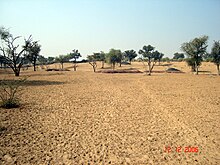
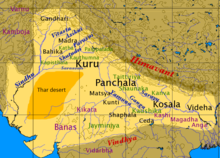



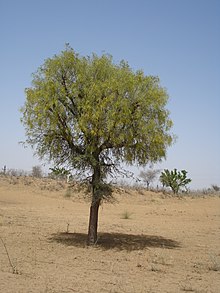

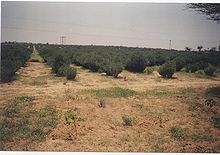



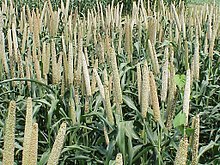




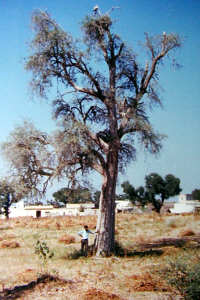







No comments:
Post a Comment